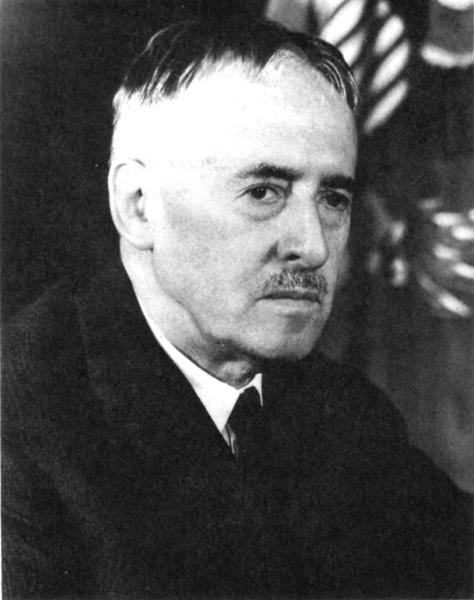| Issue | Republicans | Democrats |
|---|---|---|
| Military | + | - |
| Imperialism | + | - |
| Free Trade | - | + |
US Foreign Policy
The Cold War and Domestic Politics
Professor
Department of Political Science
011C Calvin Hall
meflynn@ksu.edu
2024-08-27
Lecture Overview
Historical Context
Bipartisan Consensus
Consensus and Collapse
Key Questions
- How have domestic coalitions and their preferences over foreign policy changed over time?
How has “ideology” developed over time?
How have the interests and positions of political parties changed over time?
What were some of the key factors in generating greater support for a more internationalist foreign policy?
Does bipartisanship represent convergence of interests or “political will”?
How have the interests of different regions affected preferences over the different “pillars” of liberal internationalism?
Historical Context
Historical Context
Core elements of US foreign policy during the Cold War:
Projection of American military power
Free trade and investment
Multilateral engagement
| Party | Independece for Cuba | Annexation of Hawaii | Build and Fortify an Isthmian Canal |
|---|---|---|---|
| Republicans | 17 | 87 | 63 |
| Democrats | 91 | 44 | 15 |
| Note: These votes are a subset of the votes used by Trubowitz (1998, 54) for the purposes of analyzing support for imperialism. All votes occurred during 55th Congress. Roll call data obtained from www.voteview.com (Poole 2012). Vote on Cuba is the vote on the Dinsmore (D-AR) Amendment recognizing Cuban independence (April 14, 1898). Vote on the Annexation of Hawaii is the final vote on the Newlands (D-NV) resolution to annex Hawaiian Islands (June 15, 1898). Canal vote is the vote on the Hepburn (R-IA) Amendment to build and fortify an isthmian canal in Nicaragua (May 2, 1900). |
Historical Context
Economic factors
Northeast dominated by manufacturing sector
Manufacturing had strong interest in protectionist policies
Protectionism tends to correlate with more conflictual foreign policies
Northeast also controls electoral votes for presidency

Historical Context
Great Depression:
October 29, 1929 stock market crashes
Sparks a worldwide depression
Many countries resort to protectionist policies
Economic crisis exacerbates other crises around the world






Bipartisan Consensus

Bipartisan Consensus
So what changed?
Security factors
Divided government
Economic factors
Bipartisan Consensus
Security factors:
World War II
Pearl Harbor unties Roosevelt’s hands
Several prominent Republicans rally support for US intervention
Roosevelt appoints several high-profile Republicans to his cabinet
Eventual emergence Soviet threat
Bipartisan Consensus
Henry L. Stimson
Secretary of War
Republican
Long history of government service
Well connected

Bipartisan Consensus
Divided government
Republicans win control of both House and Senate in 1946 elections (80th Congress)
Critics cite League of Nations and WWI as failure of domestic politics
Bipartisanship becomes key to Cold War era policies

Bipartisan Consensus
Arthur Vandenberg (R-MI)
“Converted” to internationalism following attack on Pearl Harbor
Enormously influential in securing Republican support for Truman policies




Bipartisan Consensus
Political Factors
Divided Government
Low political polarization
More moderates

Bipartisan Consensus
Economic factors
Move to free trade
US position in global economy changing
Manufacturing sector more competitive
European economy collapses during WWII
South Benefiting from military spending






Collapse
Collapse
Typical foreign policy narrative is that this bipartisan consensus collapsed
Vietnam War
End of the Cold War
Collapse
Typical foreign policy narrative is that this bipartisan consensus collapsed
Vietnam War
End of the Cold War
Or did it?
Collapse
Vietnam War
War is long and bloody
Argued to have shattered the bipartisan consensus
Democrats/liberals increasingly dovish
Republicans/conservatives increasingly hawkish
Collapse
Cold War
Berlin Wall falls in 1989
Threat posed by the USSR is gone
Incentives for bipartisan cooperation are also gone
Collapse
Economic explanation:
Cold War economic policies are working
Northeast industry suffering from international competition
South Benefiting from military spending
| Region | Party | Free Trade | Military |
|---|---|---|---|
| North | Republican | - | + |
| South | Democrat | + | - |
| West | Mixed | Mixed | - |
| Region | Party | Free Trade | Military |
|---|---|---|---|
| North | Democrat | - | - |
| South | Republican | + | + |
| West | Republican | + | + |


